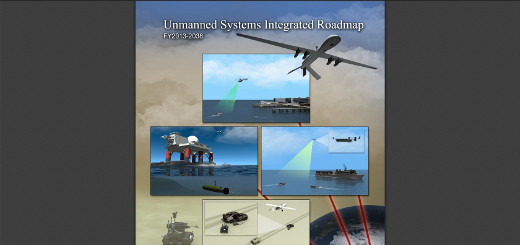Results of first stage in DARPA Robotics Challenge released
If robotics has anything close to a Super Bowl, it’s probably the DARPA Robotics Challenge, which launched last year and will conclude in December 2014 with teams competing for a $2 million prize. The goal of the competition is to develop a robot that can provide meaningful assistance in disaster relief efforts.
Sticking with the football analogy, today we found out who made it past the first round of the playoffs with the announcement of the teams moving forward from the competition’s first stage, the Virtual Robotics Challenge.
In all, 26 teams from eight countries qualified to compete in the VRC, which was held from June 17-21. DARPA had allocated resources for the six teams that did best, but according to a release announcing the winners, good sportsmanship will allow members of the top nine teams to move forward (that’s where the football analogy probably breaks down).
They are:
- Team IHMC, Institute for Human and Machine Cognition, Pensacola, Fla. (52 points)
- WPI Robotics Engineering C Squad (WRECS), Worcester Polytechnic Institute, Worcester, Mass. (39 points)
- MIT, Massachusetts Institute of Technology, Cambridge, Mass. (34 points)
- Team TRACLabs, TRACLabs, Inc., Webster, Texas (30 points)
- JPL / UCSB / Caltech, Jet Propulsion Laboratory, Pasadena, Calif. (29 points)
- TORC, TORC / TU Darmstadt / Virginia Tech, Blacksburg, Va. (27 points)
- Team K, Japan (25 points)
- TROOPER, Lockheed Martin, Cherry Hill, N.J. (24 points)
- Case Western University, Cleveland, Ohio (23 points)
To understand the purpose of the VRC, you have to understand that the challenge is made up of four tracks. Tracks A and D are developing both control software and hardware for their robots, while tracks B and C will only develop control software for use with an Atlas robot created by Boston Dynamics. The Virtual Robotics Challenge used a simulated environment to test the control software from the two tracks that will be using an Atlas robot. Finally, of the four tracks, only tracks A and B received initial funding from DARPA. Still following? If not, all the details are available here.
Here’s where the good sportsmanship comes in: Jet Propulsion Laboratory, which also has a Track A effort with its own robot, decided to merge its two efforts and offer the bulk of the resources it earned in the VRC to other teams. In addition, Team K and Case Western merged into a single team known as HKU. DARPA split the freed JPL resources between TROOPER (Lockheed Martin) and HKU, with the robot associated with the JPL win going to TROOPER and HKU using an Atlas robot donated to it by Hong Kong University.
That means seven teams with Atlas robots and DARPA support will be going to the next round, the DRC Trials in December, where they will compete in the real world with the teams who designed their own robots.
Below is a description from DARPA of how the VRC worked, along with a video showing the virtual environment:
VRC teams were evaluated based on task completion and effective operator control of the robots in five simulated runs for each of three tasks (15 total timed runs) that addressed robot perception, manipulation and locomotion. The tasks included: entering, driving and exiting a utility vehicle; walking across muddy, uneven and rubble-strewn terrain; and attaching a hose connector to a spigot, then turning a nearby valve. To simulate communications limitations in a disaster zone, the VRC imposed a round trip latency of 500 milliseconds on data transmission, and varied the total number of communications bits available in each run, from a high of 900 megabits down to 60 megabits.
To conduct the VRC, DARPA funded the Open Source Robotics Foundation to develop a cloud-based simulator that calculates and displays the physical and sensory behaviors of robots in a three-dimensional virtual space, in real time. The simulator allowed teams to send commands and receive data over the Internet to and from a simulated ATLAS robot—information very similar to what would be sent between a physical robot and its operator in the real world.
[ photo courtesy of DARPA ]



